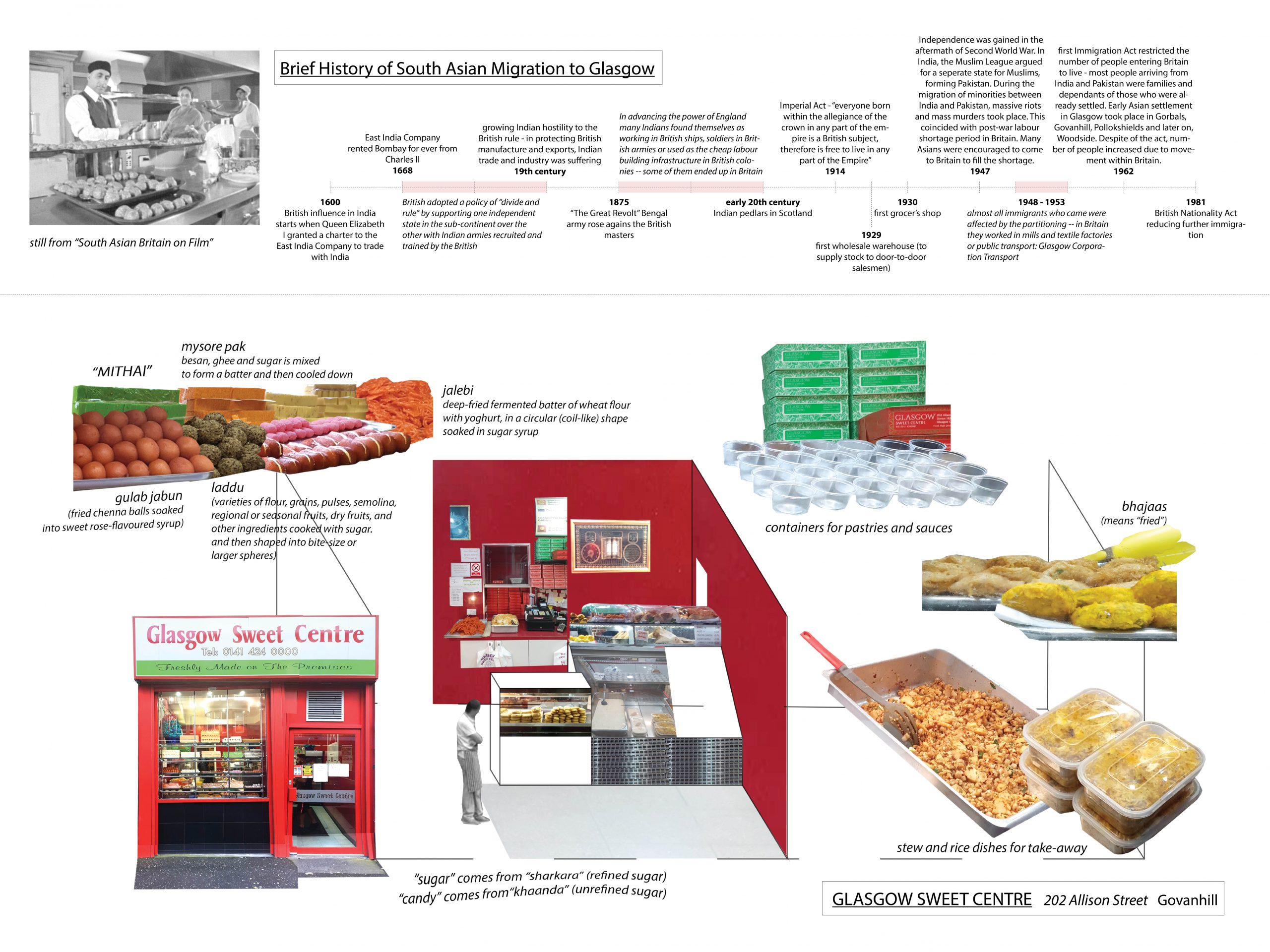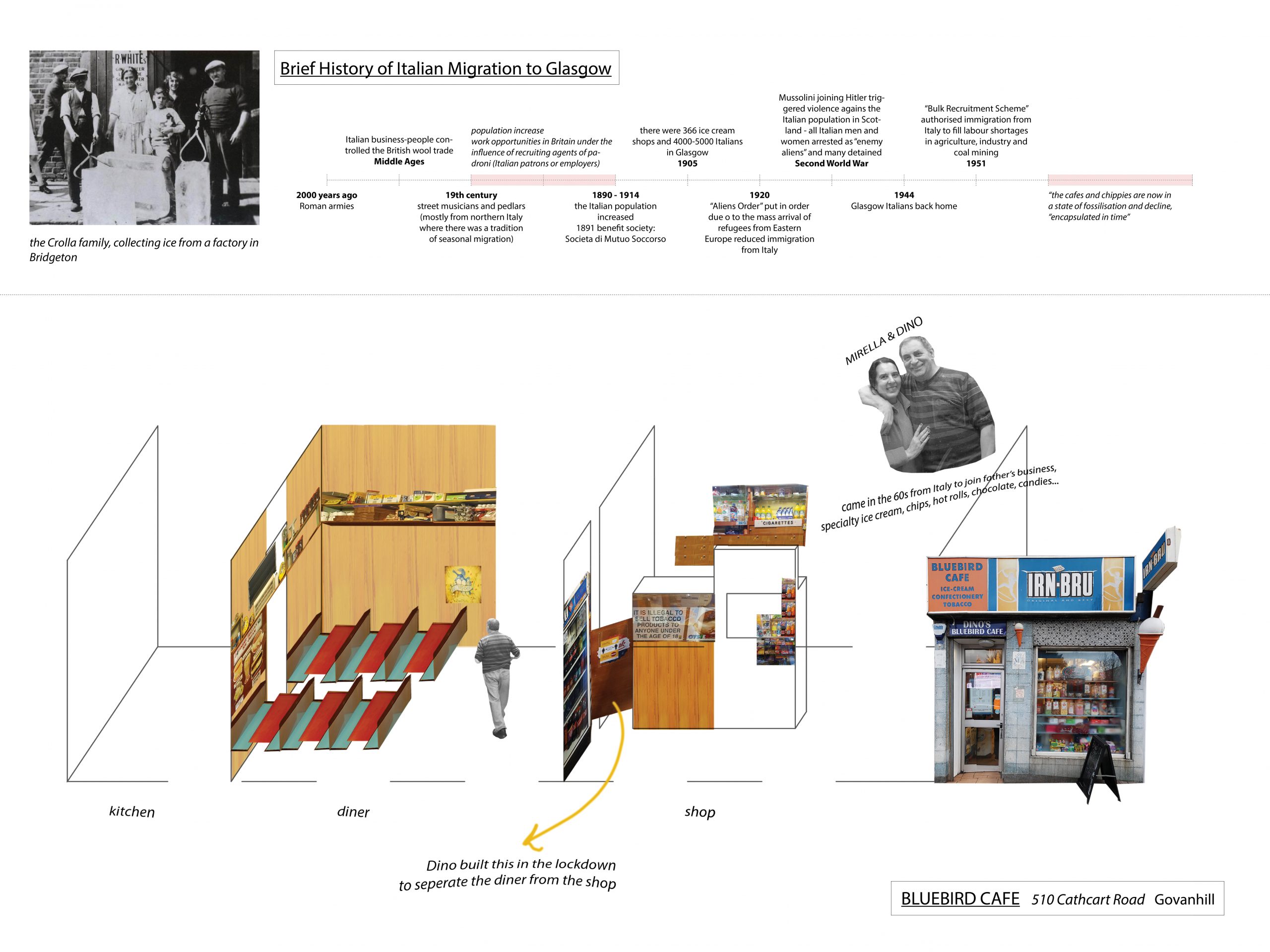For over 200 years, Glasgow has hosted a diverse range of people with different ethnic origins, languages, customs and religions. Those living in the city today may be the descendants of people who came to Glasgow in the 18th and 19th Century from the Highlands or Ireland. Or perhaps grandchildren of those who came from other European countries, India, Pakistan or Hong Kong. More recently many asylum seekers, and migrants from the European Union, are settling in Glasgow. They all help to provide Glasgow with a layered social-scape and infrastructure.
Many walks in the city take you along streets of the sandstone tenements that are famous to Glasgow, however, the architecture does not reflect how multicultural Glasgow is. You have to look hard to spot small interventions, and it is only once you are inside the shops or cafes that you appreciate the diversity of people and their different backgrounds. These diversities have not expressed themselves in new building typologies or architectural languages, rather have inserted themselves into the existing fabric.
Through a close-up study of some of such shops in Woodlands, Charing Cross, Parkhead and Govanhill, we tried to investigate how different cultural habits and behavior influence spatial constellations of food establishments performed inside and around the shells of tenements.
This particular study focuses on two shops in Govanhill and through them, explores the history of migration of Italian and South Asian communities to Glasgow, guided by Mary Edward’s book Who Belongs to Glasgow?. The possible correlations between historical processes and spatial imprints reveal the hidden influences which transform the cityscape over time and raise questions about territory and movement.
Key Themes: Migration, Food, Shop Typologies, Community


